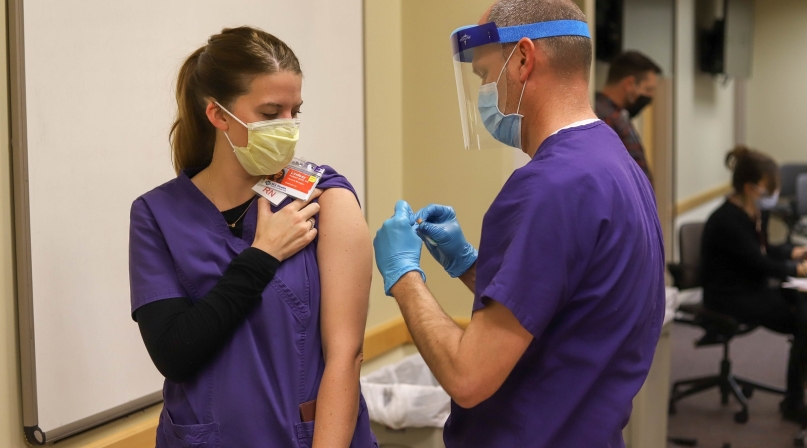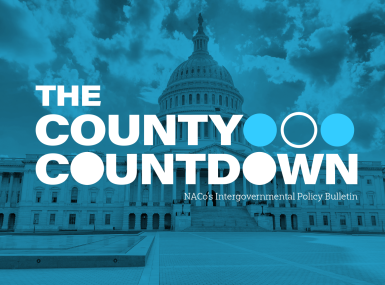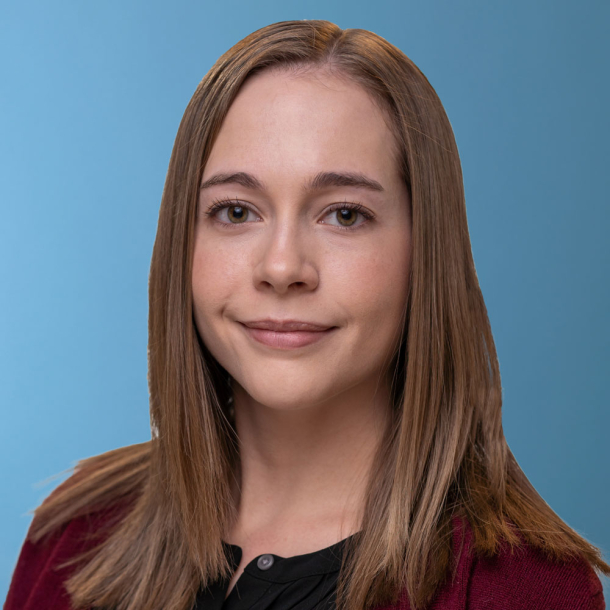Communication campaign for vaccines: ‘Most important one we’re going to do’
Author
Upcoming Events
Related News

Key Takeaways
As the United States takes on one of the largest mass vaccination efforts in the country’s history, counties are establishing their roles in communicating and notifying local communities about the vaccine distribution process.
Officials in Hennepin County, Minn. began thinking about vaccine distribution in the summer and worked to solidify a communications plan within the last month, said Jamie Zwilling, Hennepin County’s director and chief communication officer.
The plan pivots from the “Take Care” campaign the county launched in the beginning of the pandemic to educate residents about COVID-19 safety protocols.
Zwilling said the core piece of the vaccination communication plan focuses on trusted messengers, which are nonprofits, organizations and individuals within the community.
The county’s role in a mass vaccination effort is to promote vaccine campaigns, develop pro-vaccine messages for priority populations and spread vaccination event information, according to Zwilling. The plan addresses safety concerns and provides specific information for those in high-risk groups.
“None of us expected that we would do this kind of a public campaign in our career when we chose public service and it’s the most important one we’re going to do,” he said. “It’s impacting everyone’s lives and we have an important role here to play.”
The county’s communication plan may be altered depending on the timeline for vaccine rollouts. It is broken into categories with specific communication strategies depending on the phase of the vaccine rollout plan.
“We’re going to have to continue to be flexible and able to respond to any changes, but so far we’re feeling confident and excited that this part of the communication plan has a really good end result,” he said.
County communication plans are also focusing on providing answers to the questions on most people’s minds: “When and how will I get the vaccine?”
In Lake County, Ill., Jefferson McMillan-Wilhoit, director of Health Informatics and Technology, said officials have also been planning for the vaccine since the summer and have worked toward implementing policies and procedures for a mass vaccination strategy by launching the Lake County AllVax Portal.
County residents can register for the portal online or by phone to secure a place in line when vaccines become available, according to McMillan-Wilhoit. Those who register will receive a notification when their vaccine is ready and will be able to schedule vaccination appointments through Lake County clinics or with other providers and facilities.
“We like to refer to it as a shield around our community members that shields them away from all the logistical hurdles and challenges that come with doing a vaccine at this scale,” McMillan-Wilhoit said.
Once an individual receives the first dose of the vaccine, they will receive another notification through the portal seven days before they are due for the second dose and may then schedule the second vaccination appointment through the platform.
Over 200,000 community members have registered in the system.
The data-driven portal also tracks metrics related to vaccine distribution for county health officials to monitor distribution progress.
“The system actually orchestrates all of the communication between the resident who has booked that appointment all the way up to the state, which is tracking the vaccine into the vaccine registry,” McMillan-Wilhoit said.
Lake County is using social media and community partners to target vulnerable communities and encourage residents to sign up for the portal.
“Our role is to make sure that the information that is going out there is true, accurate and reflects the current state of things,” he said. “We are also really there to make sure that all parts of the community are reached.”
In Boulder County, Colo., Public Information Officer Chana Goussetis said the county received an influx of inquiries by phone and email from people asking about the vaccine.
“It became really clear that folks were feeling a bit anxious about being missed,” she said.
Goussetis created an online signup form for individuals to fill in their name, email address and select their group based on the vaccine rollout plan. When vaccine information for that group becomes available, Goussetis said they will send an email and let the individual know where they can receive a vaccine.
Around 80,000 people have signed up for the system which the county has promoted with press releases, media interviews and social media platforms.
“I think that local public health has an obligation to share what information they have in all the ways they can,” Goussetis said.

Attachments
Related News

County Countdown – January 28, 2025
The first 100 days, Intergovernmental Disaster Reform Task Force fly-in, SALT deduction profiles released, reauthorization of Secure Rural Schools, and Medicaid and counties.

HRSA Releases Final Reentry Care Guidelines Following NACo Input
On November 29, the Health Resources and Services Administration (HRSA) released their final Policy Information Notice (PIN) with policy guidance for health centers who support transitions in care for justice-involved individuals reentering their communities.

